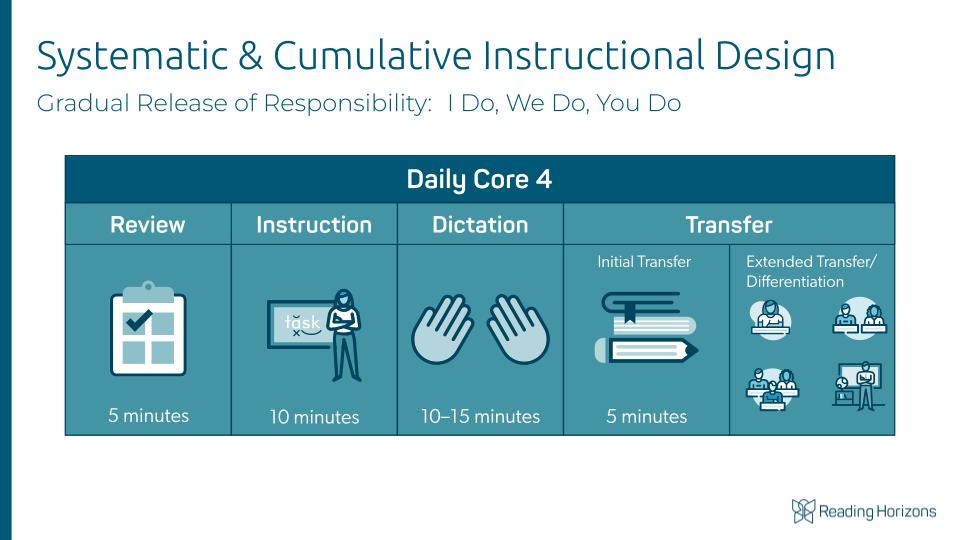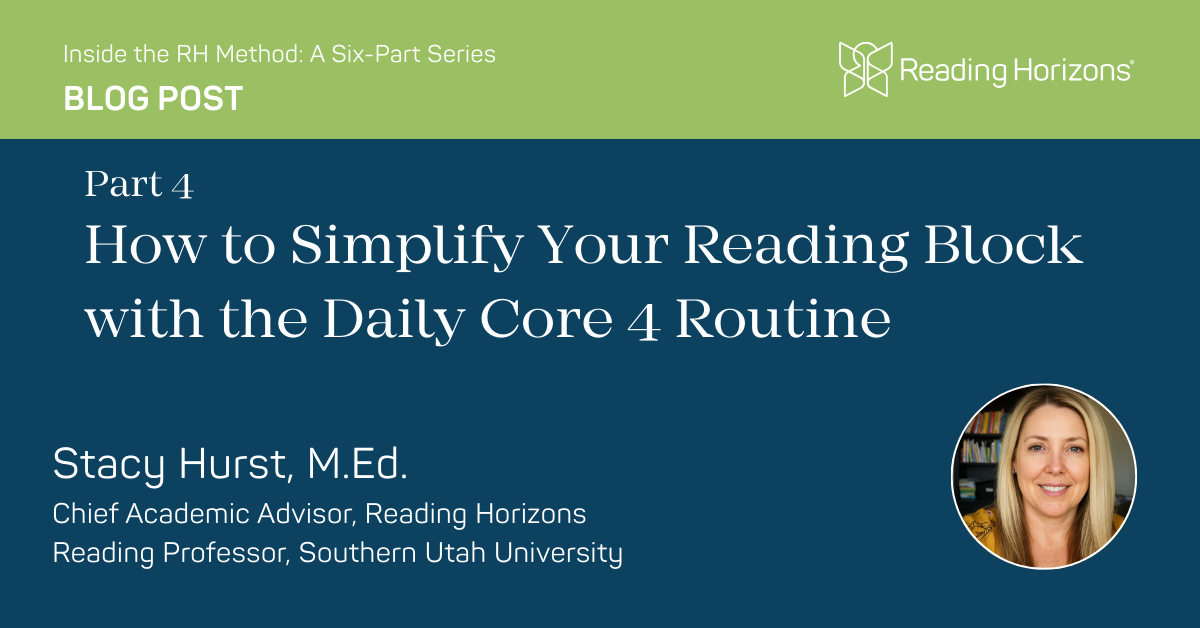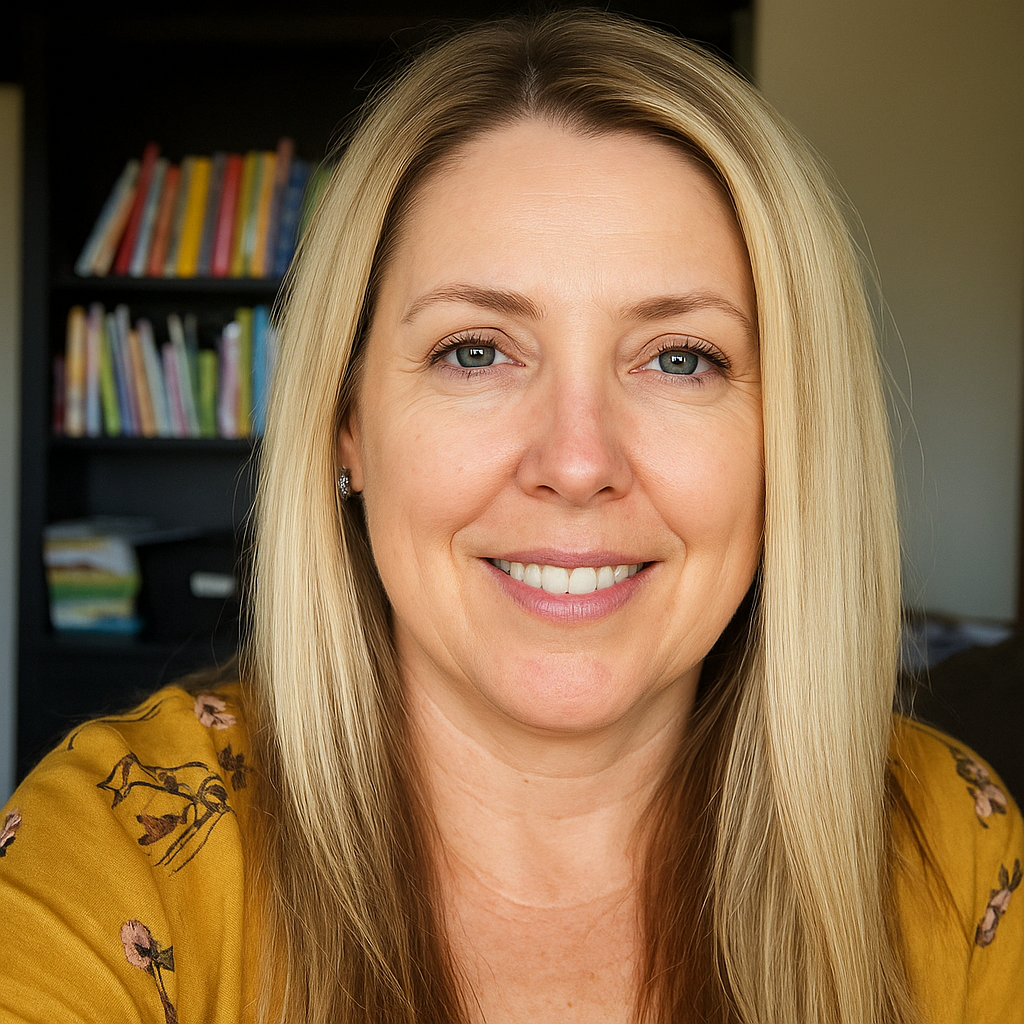By Stacy Hurst
This post is Part 4 of a six-part series, “Inside the RH Method,” exploring how the science of reading connects to daily classroom practice.
If there’s one universal truth among teachers, it’s this: there’s never enough time in the day—especially in the reading block. Between planning, prepping, and keeping students engaged, the literacy block can easily become overwhelming. I’ve been there as a classroom teacher, a literacy coach, and now as a professor working with future educators. I’ve felt the same tension that so many of you feel each day—how to simplify your reading block while delivering instruction that’s meaningful, engaging, and research-based.
Planning an effective literacy block can take hours—sorting through activities, organizing materials, and managing transitions. Teachers want to implement evidence-based instructional routines, but the sheer amount of options can feel overwhelming.
That’s why a simple, repeatable framework makes such a difference. It saves valuable planning time, streamlines instruction, and gives students the consistency they need to thrive. With a steady structure in place, teachers can focus less on managing and more on teaching, while students experience reading as a clear, connected journey.That’s precisely why the Reading Horizons (RH) Method includes the Daily Core 4 Routine. Grounded in the evidence-based principles of structured literacy instruction, it’s one of the most powerful time-saving practices—and one of the reasons RH has become such a trusted resource for teachers across the country.

The Daily Core 4 Routine breaks each literacy block into four essential components:
- Review (5 minutes): Revisit previously taught skills to strengthen prior learning and build readiness for new learning.
- Instruction (5–10 minutes): Teach a new skill explicitly and systematically, modeling the concept and process clearly for students.
- Dictation (10–15 minutes): Guide students in multisensory practice—hearing it, saying it, writing it, and reading it—with feedback. This step builds accurate and automatic phoneme–grapheme mapping of the newly learned orthographic pattern.
- Transfer (20–30 minutes): Guide students in applying the new skill through structured reading of words, sentences, and decodable or controlled text—first chorally, then with a partner, and finally independently. The focus here is on building fluent reading with feedback from the teacher as needed.
If you’re familiar with the gradual release of responsibility model (“I do, we do, you do”), the Daily Core 4 will feel like second nature—it follows that same progression in a simple, repeatable structure.
By using this structure, teachers experience multiple benefits. First, it simplifies planning. Instead of creating separate lesson plans for different days, teachers can anchor every lesson in the same reliable flow. Second, it provides students with consistency—a critical component for learning. They know what to expect, which reduces anxiety and increases engagement.
Another powerful element is the connection to the science of reading. Each piece of the Daily Core 4 is designed to align with cognitive principles of how students acquire and retain reading skills. Dictation, for instance, connects multiple brain pathways by integrating listening, speaking, writing, and reading—a perfect example of multisensory instruction.
When I implemented the Daily Core 4 in my own classroom, I noticed its value. My students were more focused and less fatigued. And I was less overwhelmed because I wasn’t reinventing my routine every day. Instead, I could focus on the joy of teaching and the progress my students were making.
If you’re searching for a way to simplify your reading block without sacrificing instructional quality, I can’t recommend the Daily Core 4 enough. It’s efficient, research-aligned, teacher-friendly, and student-centered.
To see how easily this routine can fit into your own classroom, I invite you to explore the free Teacher Edition of Reading Horizons Discovery. It’s an opportunity to simplify your teaching—and help your students thrive.
Make your reading block easier — start free with RH Discovery!
Read Part 3 in the series or move on to Part 5, coming soon.


